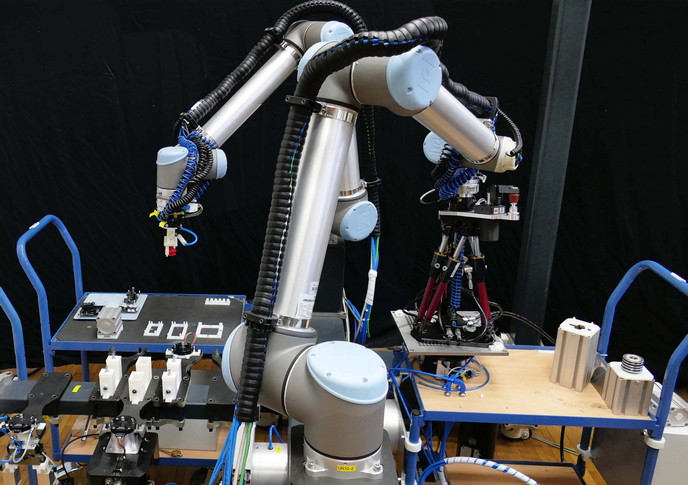Assembly tasks made faster, more accurate and economical thanks to next-gen robotic workstation
Setting up robot-supported production processes demands expert knowledge. It also requires significant time for configuration, programming, testing and fine-tuning, all of which are very costly for SMEs. On the whole, robotic automation isn’t economically feasible for SMEs, especially for small batch sizes. Rapid, self-adaptable and affordable automated assembly processes The EU-funded ReconCell project has developed a workcell designed specifically for the needs of SMEs to substantially reduce set-up and maintenance time. “This cutting-edge workcell makes robot solutions commercially viable, even for small batch sizes of about 1 000 units in some cases,” says coordinator Ales Ude. The workcell is able to autonomously pick parts from a tray or conveyor belt, place them into reconfigurable fixtures that adapt to the particular geometry of the workpiece, and hold them in a precise position during the assembly process. As part of the modular software and hardware design phase, project partners introduced several innovations. Reconfigurable fixtures (hexapods) with pneumatic brakes are used to increase flexibility for assembly processes in robotic workcells. They devised novel ways to program robot assembly applications based on kinaesthetic teaching, where the human worker guides the robot through the desired task with his or her own hands instead of programming the task manually. The developed workcell control system is based on ROS robot middleware that fully supports the system’s modular design, including communication between all workcell elements. Autonomous robot workcell for large and small production lines A series of automated robot assembly experiments provided by SMEs from five European countries demonstrated the feasibility of automated robot assembly in these companies. ReconCell showed that robotic cells can be automatically reconfigured without using many active hardware parts with motors and sensors. By equipping the workcell’s building blocks with passively moveable parts, the robot can use its own manipulation capabilities to automatically reconfigure its workspace from one production process to another. Passively reconfigurable hardware is much cheaper than hardware with active components. The ReconCell team also showed that new technologies such as 3D printing can significantly contribute to the successful implementation of robot assembly applications. 3D printing enables rapid prototyping of grippers, fixtures and other tools needed for assembly. In this way, task-specific hardware solutions can quickly be developed, making programming of assembly tasks much faster and easier than when general purpose hardware solutions are used. Commercialisation efforts are well underway. A spin-out company called FlexHex has been created for the hexapod, the workcell’s component. The consortium is also looking into other investment and funding opportunities to commercialise the entire workcell. “ReconCell’s technological advances show that manufacturing companies with typical SME-like assembly procedures can achieve a significant boost in productivity and reduction in production costs, as well as become more competitive by introducing an easy-to-use, reconfigurable and reprogrammable workcell,” concludes Ude. “By introducing a new generation of robotic workcells to the European SME manufacturing industry, the number of SMEs that are able to exploit robotic solutions in their production processes will increase.”
Keywords
ReconCell, robot, SME, robot assembly, production process, robot workcell, robotic workcell







